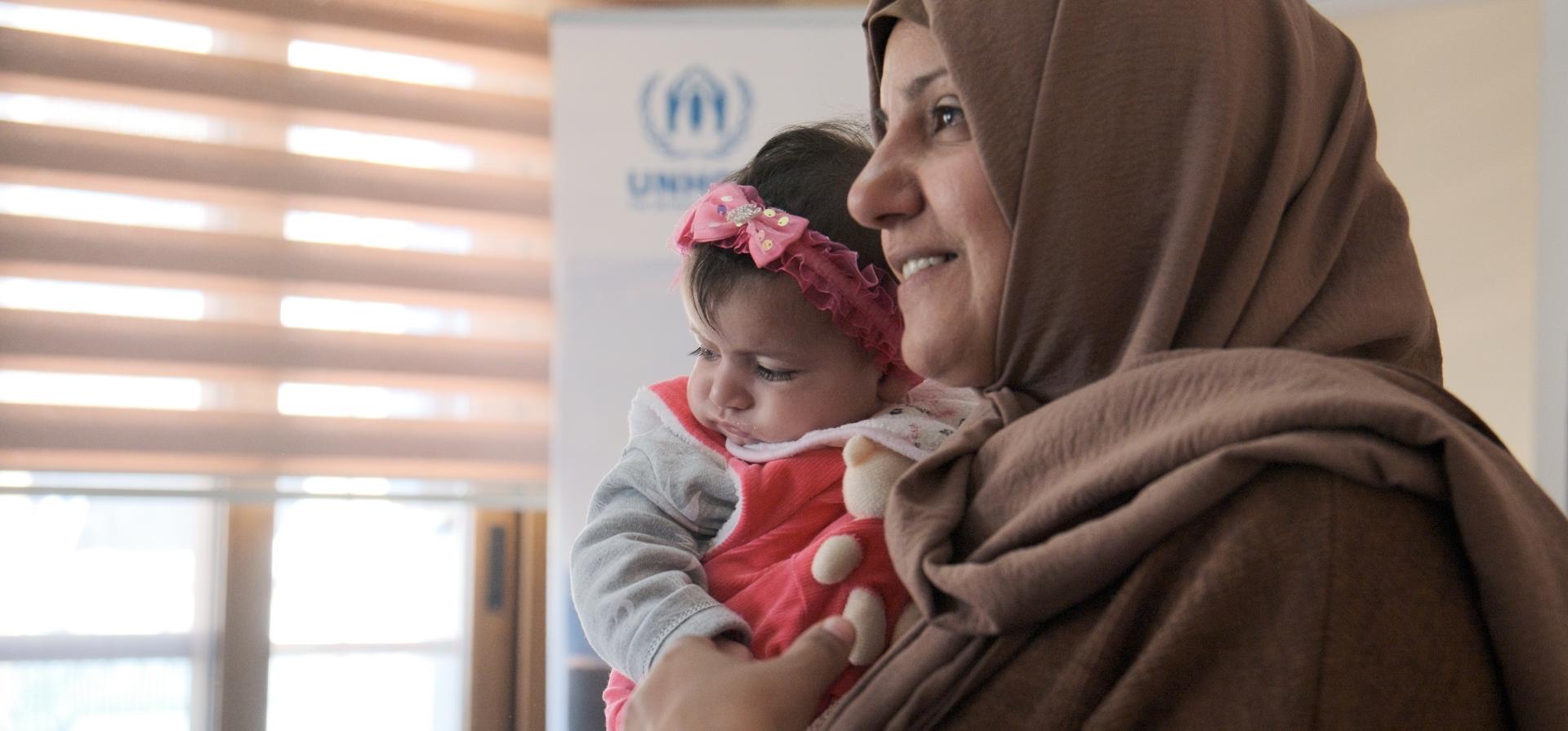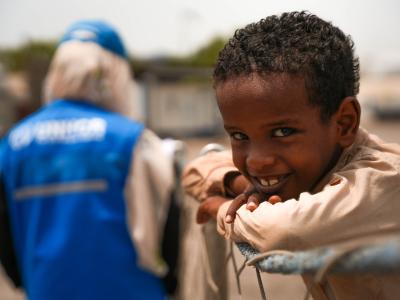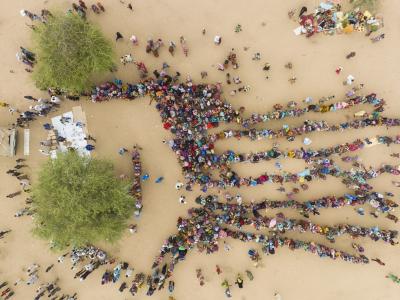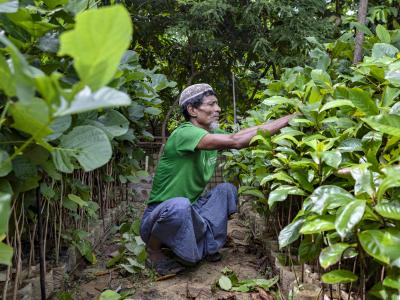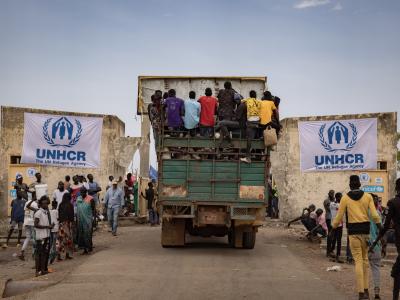Regional overview
Multiple new emergencies occurred in and neighbouring the Middle East and North Africa in 2023. The already dire humanitarian situation in the Syrian Arab Republic was further compounded by the February earthquakes, which affected more than 8.8 million people and claimed thousands of lives. Massive flooding occurred in Libya, displacing an estimated 44,000 people. In Sudan, a conflict between the Sudanese Armed Forces and the paramilitary Rapid Support Forces drove over 400,000 Sudanese and individuals of other nationalities into Egypt between April and December. Increased conflict in Mali, coupled with the withdrawal of the UN Stabilization Mission, caused 55,000 Malians and 8,000 Mauritanian refugee returnees to flee into Mauritania. Most new arrivals settled in the Hodh Chargui region, which has high levels of multidimensional poverty and is prone to climate shocks. The war in Gaza has had widespread implications for the region, including an intensification of cross-border clashes between Lebanon and Israel, attacks against US forces and installations and related retaliations in Syria and Iraq, and the launch of attacks by Ansar Allah in the Red Sea, which increasingly threatened global trade and regional stability.
Deteriorating socioeconomic conditions and insecurity contributed to a further shrinking of the already tight protection space in the region. Several countries experienced heightened anti-refugee rhetoric, continued restrictions on access to territory and safety, and increased expulsions. North Africa in particular saw increased onward movements from countries of first asylum, including by sea to Europe: arrivals to Italy from Tunisia more than tripled in 2023 compared to the year prior. A worsening funding outlook prompted reductions in UNHCR's protection and assistance, with over $214 million less received for the region than in 2022.
As a result of ongoing clashes along Lebanon’s southern border, 76,000 people had been newly displaced to other parts of the country by the end of 2023, including nearly 4,000 Syrian refugees. UNHCR and its partners supported the Government of Lebanon’s advanced preparedness and emergency response with emergency relief items, cash assistance, monitoring of risks and needs in collective shelters, and referrals to specialized services. In Egypt, UNHCR worked with the Government, through the Egyptian Red Crescent, to send humanitarian aid to Gaza and prepare contingency stocks of relief items.
In 2023, over 323,000 individuals were newly registered with UNHCR across the region, a 62% increase compared to 2022, primarily as a result of the conflict in Sudan and new arrivals in Egypt. As people fled from Sudan, UNHCR enhanced reception conditions at border-crossing points in Egypt and increased registration capacity, registering over 138,000 new refugees from Sudan for protection and assistance. By year-end, the Sudanese refugee population in Egypt grew to 207,000, surpassing the number of Syrian refugees. UNHCR also strengthened registration and assistance capacity in Tunisia, where asylum applications increased sevenfold from 2022, mainly due to arrivals from Sudan. In Libya, new arrivals from Sudan were also observed, though access was limited.
There was a decrease in the number of internally displaced people (IDPs) across the region, including in Iraq, Syria and Yemen. Most significantly, in Libya, the total number of IDPs decreased from 135,000 to some 50,000 who still require substantial effort to realize solutions.
In response to the Syrian refugee crisis, UNHCR and UNDP continued to co-lead the Syria Regional Refugee and Resilience Plan, focused on protecting people, promoting durable solutions, contributing to dignified lives, and enhancing local and national capacities with a long-term, solutions-oriented response.
Dialogue continued in 2023 to address obstacles to voluntary return, however, UNHCR considered that the conditions inside Syria were not yet conducive for the facilitation of large-scale voluntary returns in safety and dignity. The number of refugees returning to Syria fell to 38,300, down from 50,800 in 2022 and back to levels seen during the pandemic. The eighth regional survey on “Syrian refugees’ perceptions and intentions on return to Syria” found only 1.1% of refugees intended to return to Syria in the next 12 months, citing concerns over safety and security, livelihoods, basic services and housing as the main factors influencing their decision-making.
The lives of many refugees, asylum-seekers and IDPs across the region were supported through cash assistance, with Lebanon, Jordan, Yemen, Iraq and Egypt among the largest UNHCR operations delivering cash assistance. UNHCR distributed $243 million to 2.8 million forcibly displaced individuals across 16 operations in 2023, of which 90% was unrestricted cash assistance, providing dignity of choice in meeting recipients’ needs, mitigating risks and advancing protection outcomes. Across the region, 95% of cash recipients felt that the assistance improved their living conditions and well-being.
Voluntary return and local integration remained elusive for most refugees. In 2023, there were 27,000 resettlement departures of refugees of all nationalities from the region, an increase from the 21,000 refugees who departed in 2022. Despite the rise, resettlement spaces within the region (excluding Türkiye) were still well below the projected needs of 463,380.
Regional expenditure and budget
$974 million spent against a budget of $2.442 billion
$1.467 billion of unmet needs or 60% of the budget
Population overview
Financial overview
Trends in response
Multisectoral monitoring results
Protection

Child protection

Basic needs


Shelter

Health



Nutrition

3.1 million people received protection services*
2022 result: 4.0 million
*Protection services encompasses a vast range of community-based, individual and household interventions in various domains of UNHCR protection work, including counselling and information on rights, sensitization on protection issues, community outreach and mobilization, specialized services for children or other persons with specific needs, GBV programming, legal assistance, registration and documentation, Refugee status determination and resettlement case-work, protection monitoring.
969,000 children received protection services*
2022 result: 1.2 million
*Child protection services include support through Best Interests Procedures for children at risk, targeted support for children with specific needs and children in alternative care, support through family tracing and reunification, and reintegration support for children associated with armed groups and forces.
2.8 million people received cash assistance
2022 result: 4.5 million
1.8 million people received non-food items including core-relief items*
Indicator not available in 2022.
*This indicator reflects the total number of people who benefited from the direct distribution of in-kind non-food items, including domestic Core Relief Items (CRIs) and excluding shelter CRIs.
633,000 people received shelter and housing assistance*
Indicator not available in 2022
*Shelter and housing assistance includes emergency, transitional and durable shelter provision, collective shelter, shelter repair and maintenance, and rental programming.
1.6 million people received essential health care services
2022 result: 2.2 million
88,000 women and girls received sexual and reproductive health services*
2022 result: 69,800
*Sexual and reproductive health services include antenatal care, assisted delivery, postnatal care, family planning services and health services for survivors of gender-based violence.
208,000 people received mental health and psychosocial support services
2022 result: 138,300
3,400 children 6-59 months were admitted for treatment of moderate acute malnutrition (MAM)
2022 result: 4,600
2,400 children 6-59 months were admitted for treatment of severe acute malnutrition (SAM)
2022 result: 2,000
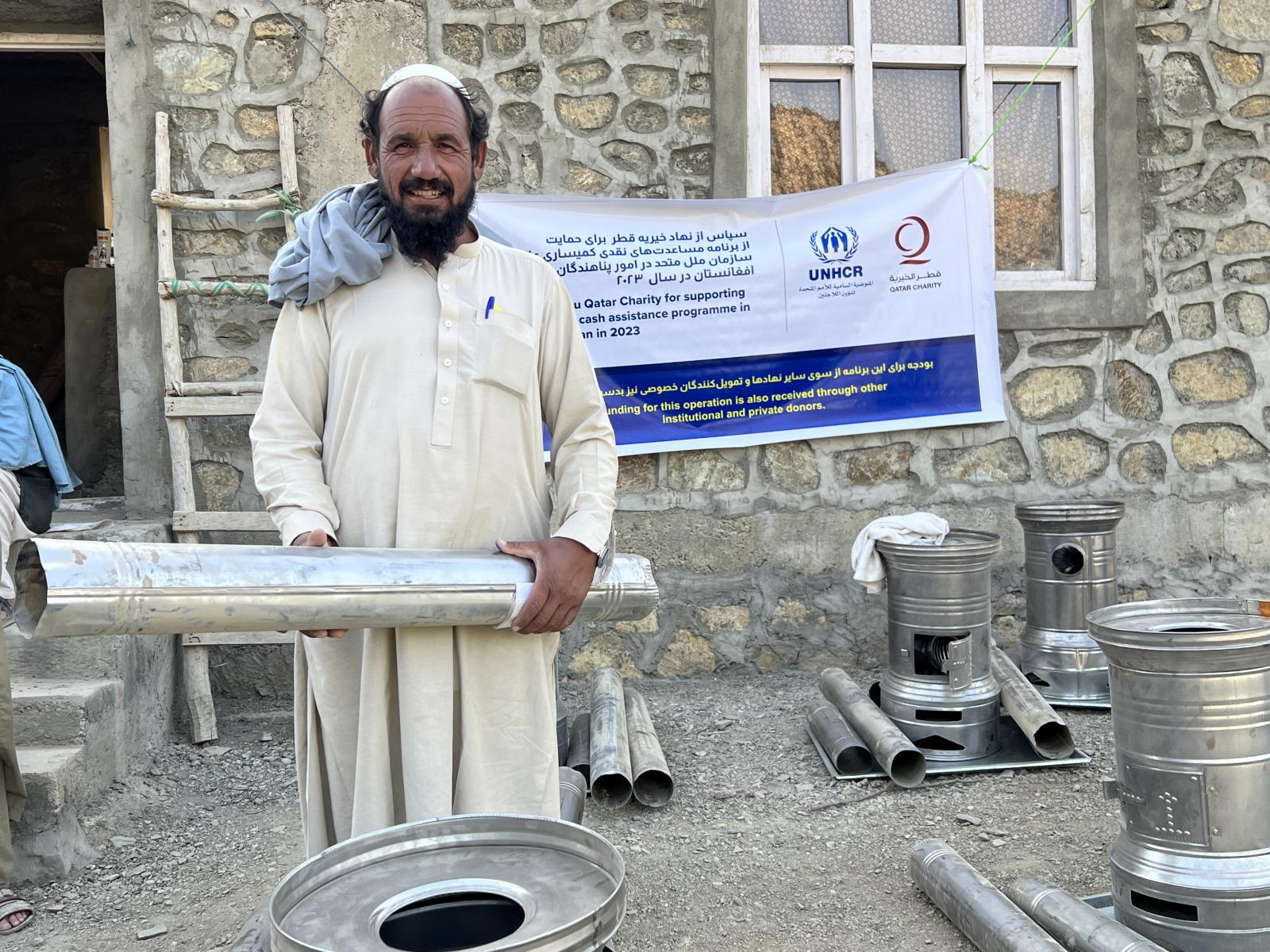

Qatar Charity and UNHCR together address critical needs of displaced and vulnerable populations
In 2023, a significant collaboration was established between Qatar Charity and UNHCR, marked by the signing of a Letter of Intent for Islamic Philanthropy. This collaboration also encompassed the initiation of eight agreements focusing on Zakat and Sadaqah donations.
The generous contributions of Zakat meant that over 339,000 refugees and internally displaced persons across Afghanistan, Bangladesh, Chad, Egypt, Libya, and Yemen received vital support in the form of multi-purpose cash assistance and core relief items. Additionally, approximately 1,870 refugees in Lebanon were able to access secondary healthcare referrals, while in Kenya, a commendable effort resulted in the provision of water, sanitation and hygiene support to 116,000 refugees.
Situations
Western and Central Mediterranean situation
Operations*
Algeria | Egypt | Iraq | Jordan | Lebanon | Libya | Mauritania | Syrian Arab Republic | Yemen
*The operations listed above are the ones with annual results reports available on Global Focus for 2023.
